Info
Abutilon Indicum (Indian Mallow): Medicinal Properties, Health Benefits, & Side Effects

Abutilon Indicum (Thuthi) is a widely used Indian shrub that belongs to the Malvaceae family and popularly called Indian Mallow in English and Atibala in Hindi. Indian mallow is a medicinal herbal plant and highly used in most traditional medicine practices like Ayurveda, Siddha, Unani, and Folk.
Various research and studies performed on this plant parts and extract have been proved that it has anti-bacterial, anti-inflammatory, anti-oxidant, anti-cancer, anti hepatoprotective, etc. clinical properties.
Indian mallow is a significant medicinal plant used in various medicine formulations, and the plant is invasive on particular tropical islands. Traditional medicine systems use Abutilon Indicum as demulcent, aphrodisiac, diuretic, pulmonary, laxative, and sedative. The plant bark is diuretic and astringent.
Siddha medicine often uses this plant. All the parts of the plant from seeds, root, bark, leaves, and flowers are used in medicine preparations by Tamil people.
The plant is beneficial in nervous disorders, general debility, headache, heart diseases, muscular weakness, paralytic disorders, and bleeding disorders.
Indian mallow includes various potential pharmacological properties. The below information has been given based on the review of several case studies performed on Abutilon Indicum to provide a basic understanding of its clinical properties, medicinal uses, traditional uses, correct dosage, and possible side effects.
Botanical Description
Abutilon Indicum (Linn.) Sweet family Malvaceae is a perennial shrub that grows up to 3 meters in height and 0.3 to 0.9 cm in diameter. The plant is distributed in roadsides, lakesides, sunny locations, and humid tropical regions. Indian mallow has long roots that are relatively long, including a number of its lateral branches. It has 1.5 to 2 cm diameter, light brown color, thin bark, smooth and dot-shaped lenticels, and easily peeled off. The root is feeble, odor, bitter, and astringent.

Features of the Stem
Below we mentioned the microscopic features of the stem of the plant.
Young Stem
The young stem looks circular in the view of the transverse section. The dense of epidermal trichomes of the plant has two types, such as Glandular and Non-glandular. It has a broad collenchymatous cortex outside, which measures 150μm thickness. The inner cortex of the young stems also the same as outer.
There are around 9 to 10 discrete triangular collateral vascular bundles available with broad medullary rays. These bundles hold prominent bundle cap fibers in discontinuous masses, phloem in thin layers, and xylem elements in several short and parallel lines. Pith is parenchymatous and wide.
Old Stem
Old stems are thick and develop secondary growth with closed vascular bundle, secondary phloem, and xylem. The phloem has a thick outer border of sclerenchyma masses. The Xylem cylinder contains vessels in radial rows and xled fibers as thick walls. It has wide pith and parenchymatous with mucilage and starch grains.
Leaves
Abutilon Indicum leaves are ovate, stipulate, alternate, cordate at base, acute, dentate irregularly, and grow up to 1.9 to 5 cm long. The petioles of the leaves are 2.5 to 7.5 cm in length.
Flowers
Flowers are in orange yellow shaded, regular, solitary, bisexual, and axillary that reach 2.5 cm in diameter. There are five sepals and five fused lobes with cup-shaped calyx. It also has shallow and apiculate lobes.
Ovary
It is superior and in a style of 10-capillary. The style crosses the stamen tube and divides into five branches. Each branch terminates in a capitate stigma. The seeds are dotted minutely.
Fruits
The young fruits are in green color that turned to black after matured and are circular capsule, dense pubescent having 11 to 20 radiating carpels creating conspicuous and spread beaks horizontally. The seeds are 3 to 5 mm size, black or brown in color, reniform, and tubercled.
Scientific Classification (Taxonomy)
Abutilon Indicum is the botanical name of Indian Mallow or Atibala. The plant belongs to the Malvaceae family.
Malvaceae is a plant family that includes shrubs, herbs, and sometimes trees. The family consists of 82 generations, nine subfamilies, and around 1500 species (even more). These plants are widely found in warm and temperate regions.
In India, there are 22 generations and 125 species of Malvaceae family available. The plants are belonging to this family bear flowers that are beautiful and showy. The flowers commonly have a filament, five petals, and sepals.
Most of the Malvaceae family plants have mucilage, laxative, antiscorbutic, emollient, and anti-bilious properties. Some of the members build up volatile oils that are diuretic, stimulant, and diaphoretic. The seeds of the plants are mostly oleaginous. Only a few species from the family have toxic properties.
We can name some of the plants from the Malvaceae family that are economically important.
- Cotton Plant (Gossypiurn sp.)
- Hibiscus
- Corchorus (Jute)
- Sida
- Okra (A. esculentus)
- Marshmallow (Althaea Officinalis Linn.)
- Bombax (Silk cotton tree)
| Kingdom | : Plantae |
|---|---|
| Sub Kingdom | : Viridiplantae |
| Infra Kingdom | : Streptophyta |
| Division | : Tracheophyta (Tracheophytes or Vascular Plants) |
| Super Division | : Embryophyta |
| Sub Division | : Spermatophytina (Spermatophytes or Seed Plants) |
| Class | : Magnoliopsida (Dicotyledons) |
| Subclass | : Dilleniidae |
| Super Order | : Rosanae |
| Order | : Malvales |
| Family | : Malvaceae (Mallows) |
| Genus | : Abutilon (Indian Mallow) |
| Species | : Abutilon Indicum (Monkey Bush – Sweet) |
Synonyms: Abutilon Indicum (Indian Mallow)
| Parts Used | : Roots, Seeds, Leaves, Flowers, and Fruits. |
|---|---|
| Plant Growth Habit | : Shrub Subshrub |
| Duration | : Perennial |
| Distribution Areas | : Hotter places of India, in the sub-Himalayan tract, and other hill stations up to 1200 m. |
| Habitat | : Warm, grown in temperate regions, as a common weed on waste places in plains, road sides, and hills. |
| Group | : Dicot |
Vernacular Names of Abutilon Indicum
| Botanical Name | : Abutilon Indicum |
|---|---|
| English Name | : Indian Mallow, Indian Abutilon, Country Mallow, Flowering Maples, Chinese Bell-flowers |
| Sanskrit Name | : Atibala, Kankatika |
| Siddha Name | : Thuthi |
| Unani Name | : Kanghi, Beejband surkh, Kangahi, Kakahi, Kakahiya, Siyah |
| Folk Name | : Kanghi, Kakahi, Kakahiyaa |
| Tamil Name | : நல்லதுத்தி/Nallatutti, துத்தி/Thuthi, பணியாரதுத்தி/Paniyarattutti |
| Malayalam Name | : ഉരം/Uram, കാട്ടുവാൻ/Katuvan, ടാബി/Dabi |
| Telugu Name | : తుత్తురుబెండా/Tutturubenda, దువ్వెనకాయ/Duvvenakaya |
| Kannada Name | : ಶ್ರೀಮುದ್ರಿಗಿದ/Shrimudrigida, ಮುದ್ರಗೀಡಾ/Mudragida, ಟುಟ್ಟಿ/Tutti |
| Hindi Name | : कंघी/Kanghi, ककही/Kakahi, अतिबला/Atibala |
| Marathi Name | : मुद्रा/Mudra, पेटारी/Petari, चक्रभेण्डी/Chakrabhendi |
| Gujarati Name | : ખપત/Khapat, કાંસી/Kansi, ડાબલી/Dabli |
| Punjabi Name | : ਕਾਂਗੀ/Kangi, ਕੰਗਈਬੂਤੀ/Kangibooti |
| Bengali Name | : পেটারি/Petari, ঝাঁপি/Jhapi, বদলা/Badela |
| Assamese Name | : Jayapateri, Jayavandha |
| Kashmiri Name | : Kath |
| Oriya Name | : ପେଦିପୀଡିକ/Pedipidika |
| Sinhala Name | : බෙහෙත් අනෝද/Beheth Anoda |
| Arabic Name | : خطمي هندي/Khatami hindiun |
| Urdu Name | : کنگھی/Kanghi |
The other common names of Abutilon Indicum (Indian Mallow / Atibala) are Country Mallow, Chinese Bellflower, Indian Lantern Plant, Indian Abutilon, Indian Mallow Abutilon, Moon Flower, Monkey Bush, and Twelve O’Clock Flower.
Medicinal Properties of Indian Mallow
Every part of the Abutilon Indicum plant has medicinal properties. The antifungal, hypoglycaemic, anti-diabetic, and immunomodulatory properties are in leaves. Antimicrobial and analgesic properties are in roots. Laxative, aphrodisiac, demulcent, emollient, antioxidant, and diuretic properties are in the seed and its extract.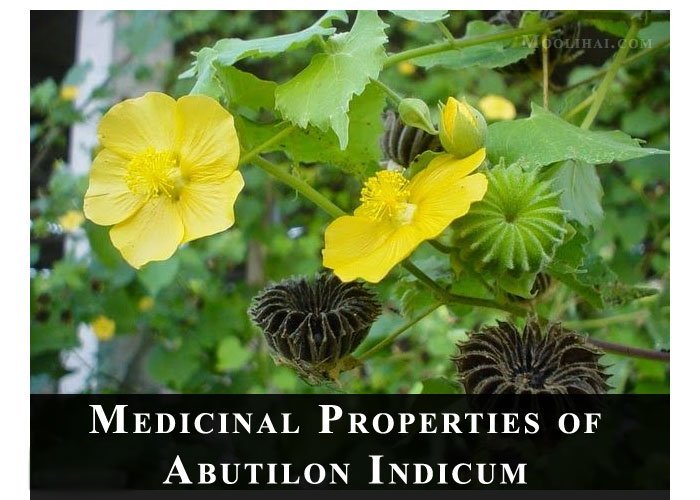
Primary Medicinal Properties
- Anodyne
- Antidiabetic & hypoglycemic
- Anti-inflammatory
- Antioxidant
- Cardiac tonic
- Carminative
- Laxative
- Nervine tonic
Secondary Medicinal Properties
- Antibacterial
- Antipyretic
- Cough suppressant
- Hematogenic
- Hepato-Protective
The Dominance of Medicinal Properties in the Plant Parts
1. Seeds
- Demulcent
- Expectorant
- Laxative
2. Roots
Diuretic
3. Stem Bark
- Astringent
- Diuretic
4. Leaves
- Aphrodisiac
- Demulcent
- Diuretic
- Laxative
- Sedative
5. Mucilage (Leaf Extract)
- Demulcent
- Diuretic
Let’s look at the clinical properties of Abutilon Indicum in detail by reviewing various studies and researches.
1. Anti-oxidant and Antibacterial Property of A. Indicum
The antioxidant and antibacterial properties of Abutilon Indicum and Abutilon Muticum are tested by using specific methods called ABTS, DPPH, FRAP, and oleic acid peroxidation. The methods tested and showed the availability of fast and slow reacting components in the seed oil of these two herbs.
Both herbal seed oils indicated wide spectrum property, and they were fighting against Gram-positive and negative bacterias. The study revealed that Abutilon species seeds are native to Pakistan and valuable herb for producing oil, drugs, and active agent used in cosmetics.
2. Analgesic property of A. Indicum
Analgesic properties of roots extracts of Abutilon Indicum (Linn.) were tested. The study used 900 grams of root powder as solvent extraction with solvents and increase polarity viz. petroleum ether order in 60 to 80 degrees Celcius, methanol, and ethanol using soxhlet apparatus for three days. They used cold maceration to extract marc for three days and obtained water-soluble extract.
The plant’s peripheral analgesic property was evaluated by inducing acetic acid (20 to 30 grams) in a writhing method in Swiss albino mice. While, central analgesic property was tested using tail flick and tail immersion methods.
Both tests demonstrated that all the extract except methanol ingested a high range of analgesic properties in subjected animals of both studies. Among these, the petroleum extract exhibited significant analgesic property, which may be associated with the central mechanism.
3. Anti-inflammatory Property of A. Indicum
The anti-inflammatory property of Abutilon Indicum leaves is evaluated by the HRBC membrane stabilization method. They screened chloroform, ethanolic, and aqueous extracts from leaves to test anti-inflammatory activities. The hypotonicity ingested HRBC membrane lysis was taken as prevention and measure of anti-inflammatory property.
In membrane stabilization, all three extracts indicated biphasic effects. The active effects of those three extracts were equal to standard drug diclofenac sodium. But the actions were lowered by time. The extracts might be work when stabilizing the lysosomal or inhibiting the lysosomal membrane.
4. Anticancer Property of A. Indicum
Potential cytotoxic and anti-oxidant properties were tested on Abutilon Indicum and Blumea Mollis. The extract from the plants tested to prove anti-oxidant property by FRAP, 1, 1-Diphenyl-2-picrylhydryzyl [DPPH] radical scavenging property.
By the Griess Illosvoy reaction with little modification, inhibition of Nitric Oxide radical was estimated. The study results showed that the extract possesses anti-oxidant properties and an inhibitory effect on cancer cells with extended duration and exceded concentration.
5. Hepatoprotective Property of A. Indicum
A study was evaluated to demonstrate the hepatoprotective property of aqueous leaf extract by comparing it with carbon tetrachloride and paracetamol-induced hepatotoxicity. The LD50 values of leaf extract were higher than 4 grams per kg bodyweight of orally administered rats.
The study indicated that treatment using carbon tetrachloride and paracetamol in rats increased the serum glutamic oxaloacetate transaminase, alkaline phosphate, serum glutamic pyruvate transaminase, direct and total bilirubin while decreased the levels of liver glutathione.
Pretreatment with extract lowered the serum glutamic oxaloacetate transaminase, alkaline phosphate, serum glutamic pyruvate transaminase, direct and total bilirubin, while increased levels of liver glutathione. The effect is equal to that of the standard silymarin. The vigor of the extract was due to cytochrome P450 interference that blacked the free radicals production.
In the study of hepatotoxicity inducing paracetamol, the hepatoprotective property in the extract was found to be due to glucuronidation promotions.
6. Immunomodulatory Property A. Indicum
In Ayurveda medicine, they used ‘Bala Compound’ to treat infants’ common diseases by improving their immune power. The medicine used Abutilon Indicum as a major ingredient.
A medicinal study on this compound showed that the intake of this compound for three to six months significantly increased the antibody levels, namely IgM, IgG, and IgA in newborns.
The immunomodulatory property of aqueous (400 mg/kg) and ethanolic (200 mg/kg) extract of Abutilon Indicum leaves using HA titre (Hemagglutination Antibody), DTH (Delayed Type Hypersensitivity), carbon clearance and neutrophil adhesion tests. The study indicated that leaf extract showed a significant improvement in primary and secondary HA titre with potential DTH reaction and increased percentage value of neutrophil adhesion test.
The study concluded that extracts have powerful immunostimulatory properties and effect on specific and nonspecific immune systems. The effect was due to the presence of alkaloids, flavonoids (quercetin), tannins, phenolic compounds, and saponin glycosides in the plant.
7. Larvicidal Property of A. Indicum
The study tested Larvicidal property of hexane, crude ethyl acetate, acetone, methanol, and petroleum ether extracts five different plants, namely Abutilon Indicum, Solanum torvum, Aegle marmelos, Euphorbia thymifolia, and Jatropha gossypifolia.
All the five plant extracts were tested for toxicity with early fourth-instar larvae of Culex quinquefasciatus. The study was done for 24 hours with exposure. All the plant extracts exhibited the larvicidal properties. But, the petroleum ether extract of Abutilon Indicum showed the maximum larval mortality.
No study results indicate that Abutilon Indicum contains β-sitosterol in the genus, but their larvicidal properties were tested. The study showed that petroleum ether extract of Abutilon Indicum might have a potentiated source of β-sitosterol and can be used as a natural mosquito larvicidal agent.
Ethno-Medicinal Profile of Indian Mallow
| Roots (To Treat) | ||
|---|---|---|
| Fevers | Chest infection | Gonorrhea |
| Hematuria | Strangury | Leprosy |
| Dry cough | Bronchitis | Gout |
| Polyuria | Uterine hemorrhagic discharge | Urinary discharge |
| Stem Bark (Used as) | ||
|---|---|---|
| Febrifuge | Anthelmintic | Alexeteric |
| Astringent | Diuretic | Aphrodisiac |
| Laxative | ||
| Plant Leaves | |
|---|---|
| To Cure | |
| Ulcer | Inflammation |
| Rheumatism | Syphilis of penis |
| Piles and to relieve leg pains | Uterus displacement |
| Inflammation of bladder | Catarrhal bilious diarrhea |
| Bronchitis | Gonorrhea |
| Used As | |
| Fomentation to apply on painful parts | Antidote to treats snakebites |
| Used In | |
| Toothache and Tender Gums | Lumbago |
| Ear-ache | Catarrh and Bilious diarrhea |
| Used For | |
| Eye Wash | Mouth Wash |
| Fruits (To Treat) | |
|---|---|
| Hemorrhagic septicemia | Cough |
| Piles | Gonorrhea |
| Plant Seeds | |
|---|---|
| To Treat | |
| Chest problems | Bronchitis |
| Piles | Gleet |
| Gonorrhea | Chronic cystitis |
| Rectum of children diseased by threadworms | |
| Used As | |
| Tonic | Expectorant |
| Laxative | Aphrodisiac |
| Emollient | Demulcent |
Health Benefits of Abutilon Indicum (Indian Mallow)
Abutilon Indicum (Indian Mallow/Atibala/Thuthi) is a herb plant where all the parts of the plant (leaves, seeds, flowers, and roots) have medicinal properties and can be used for various medicine formulations to treat various diseases and symptoms from toothaches to piles.
Indian mallow is taken internally and externally. The plant has active properties like diuretic, anti-hemorrhagic, laxative, and demulcent.

The topical Indian mallow applications prevent bleeding due to wounds, piles, healing ulcers, and infections. The seeds of the thuthi plant give vigor and strength.
The seed extract of this plant is used as an aphrodisiac. It is widely used to cure a common cold, piles, rheumatism, leprosy, jaundice, and urinary infections.
The ground leaves paste of the plant, applies to boils, and is used as medicine for arthritis. The plant leaves also reduce pain in gums and teeth. It also promotes wound healing.
The root extract of the plant has given for ulcer and hematuria treatments. It is good medicine for cough and fever. The root infusion is even a natural eyewash to use.
The flowers of the plant can be consumed raw or ground powder and help treat stomach aches.
1. Treats Inflammation in Piles
Take fresh leaves of Indian Mallow and heat it with pure castor oil in a pan. Use it as a compress, which will ease the inflammation rapidly. For best results, you can have Indian mallow leaf decoction with this compression.
To make the decoction, take three big leaves of Atikala and boil it with a cup of water and let it boil until it becomes half and then consume it. This leaf decoction also stops constipation and helps purify the blood. The treatment for piles using Indian mallow decoction usually takes place up to 45 days.
The plant’s root extract is consumed two times a day orally for 14 days to treat pain and bleeding due to piles.
Abutilon Indicum leaves, Solanum Nigrum leaves, and Piper Nigrum seeds are ground to a paste and consumed 5 grams a day for 14 days to cure piles.
Five grams of Abutilon Indicum leaves in a day for one month will significantly affect piles.
2. Treats Gum Disorders
To cure gum pain and disorders, Abutilon Indicum leaf decoction can be taken. Prepare the plant leaf decoction by boiling it with a cup of water and adding a bit of alum powder. This decoction in continuous consumption can show an effective reduction in gum pain and disorders.
You can also use this decoction for gargling to treat inflammation, bleeding gums, and toothache. The leaf decoction with alum powder can also be used as a mouthwash that strengthens the teeth and cures tender gums.
3. Promotes Wound Healing
Abutilon Indicum has antibacterial properties that are proved by much clinical research. This medicinal property of the plant helps in treating and promoting wound healing. For that, take fresh leaves of the plant and grind it with little turmeric powder (as it also has a high amount of antibacterial properties) to a paste. Apply the paste on the wounds. It reduces inflammation, infections, and pain.
The decoction of Indian mallow leaves can also be consumed for healing inflammation and promoting wound healing.
4. Skincare Benefits
Abutilon Indicum is rich in antioxidants, antimicrobial, and antiviral properties. The plant possesses astringent and reduces the pain and heal health conditions from diabetics to lipid-lowering. The plant has also provided great healing in skin-related issues.
Helps Treat Pimples – Indian mallow plant extract has antimicrobial benefits, so it used to reduce the signs of pimples and boils in the face.
Used as Cleanser – The plant has astringent properties in its extract in nature, which will act as a cleanser for skin that reduces oiliness in your face also.
Reduces Swelling – Indian mallow popularly used for its anti-inflammatory property to reduce the swelling.
Treats Rashes – The healing and cleaning abilities of the plant are used to reduce skin irritation and heal rashes.
Cooling Effect – The plant extract of Indian mallow has a cooling effect that is produced on the skin when applied topically.
Reduces Fine Lines – The antioxidant properties of Abutilon Indicum reduces wrinkles and fine lines on the skin and provides an anti-aging effect.
Also Read: Best Ways to Improve Your Skin Health
The other medicinal and health benefits of Abutilon Indicum are it is used to treat liver problems, lung diseases, blood disease, tuberculosis, and bronchitis. It also used to regulate intestinal secretions and control convulsions.
Other Medicinal Uses of Abutilon Indicum (Thuthi)
Rheumatism:
The leaves of Indian mallow are ground with mustard oil to a paste and apply topically.
Ulcers:
The decoction of Indian mallow leaves is prepared as an ointment and applied.
Urinary problems, Hematuria, and Strangury:
The root extract of Indian mallow is used to treat urinary problems as it has diuretic activities.
Also Read: 10 Best Herbs to Cure Urinary Problems
Culinary Uses of Abutilon Indicum
- In Arabia, the flowers of Abutilon Indicus are eaten raw.
- In Andhra Pradesh, India, the flowers of the plants are cooked and consumed.
The leaves of the plant have a high amount of mucilage. These leaves are used to make chutney and help relieve indigestion.
Ayurvedic Properties and Action of Abutilon Indicum (Indian Mallow)
Abutilon Indicum or Indian Mallow or Atibala or Thuthi has been included in Ayurveda medicine practices and used to balance Pitta and Vata. The plant exhibits laghu (easy for digestion) and Madura (sweet taste). The herb is recommended to improve immunity (Ojovardhaka), strength (Balya), heal injuries (Kshatahara), and improve skin health (Kanti Vardhak). Indian Mallow provides building, nourishing, moistening, and anabolic effects on the body.
| Rasa (Taste) | Madhura (Sweet) |
|---|---|
| Guna (Pharmacological Action) | Snigdha (Unctuous) |
| Virya (Action) | Shita (Cooling) |
| Vipaka (After Digestion) | Madhura (Sweet) |
Below are the actions (Karmas) and functionalities of Abutilon Indicum (Indian Mallow) herbal plant based on Ayurveda research.
| Karma(Action) | Meaning |
|---|---|
| Balya, Vrishya | Increases strength |
| Vatahara | Pacify Vata/Wind |
| Grahi | Inspissants, stomachic, digestive, heating qualities, dry the fluids of the body |
| Shukral | Improves sperms |
| Mutral | Diuretic |
Indian Mallow roots are used in Ayurveda treatment of bleeding disorders (Raktapitta), urinary disorders (Meha), and gout (Vatahar).
Gujarat Ayurved University did a study, Jamnagar, to explore the effect of Indian Mallow in garbha sthapaka and garbha vruddhikara prabhava (pregnancy difficulties and issues) in 60 pregnant women of the second and third trimester and have a history of repeated abortion. All the subjects are divided into two groups. The study compared the effect of Indian mallow with Amalaki, Garbhapalarasa, and Gondanthi.
It showed that Abutilon Indicum (Indian Mallow) powder works excellent in the development of Fetal in pregnant women (who had a history of repeated abortion) that Amalaki, Gabhapalarasa, and Godanthi powder.
Ayurvedic Health Benefits of Indian Mallow

♣ Abscess:
- Take a few leaves of Indian Mallow and crush them.
- Apply it to the affected areas in the skin.
♣ Antihepato-Toxic:
- Take fresh leaves of Indian Mallow and extract the juice from them.
- Drink 1tsp of this leaf extract once a day.
♣ Antimicrobial:
- Take fresh leaves and roots of Indian Mallow, crush them, and extract its juice.
- Drink 1tsp of this root and leaf extract once a day.
♣ Ascaris:
Heat the Indian mallow seeds and expose the affected areas of children over the smoke from burned seeds.
♣ Back Ache and Body Pain:
- Take fresh Indian mallow leaves and wash them thoroughly.
- Crush the leaves, extract the decoction, and drink it.
- Meanwhile, heat a few leaves and place them on your back and other areas in the body where the pain is high.
- Tie the leaves with your body using a cloth and leave it for some time.
♣ Bleeding Disorders:
For bleeding disorders, consume the Indian mallow extract or any other preparation every morning and evening. You will feel relief from the symptoms very soon.
♣ Blood in Urine and Pain:
- Some people suffer from urinary pain, swelling in the urinary tract, and blood in the urine won’t share the pain with others most of the time. Indian mallow is an excellent remedy for them.
- Take some Indian mallow leaves and leave it in water for some time. Add rock sugar and drink it.
- Prepare root decoction of India mallow. Drink it regularly to solve all the urinary problems.
♣ Cough:
- The ground India mallow flower powder with ghee is helpful in cough and respiratory problems.
- The Indian mallow seed and Malabar nuts decoction can be taken 10 20 ml in a day for cough.
♣ Debility after chronic disease:
Indian mallow helps a person recover from any illness faster. The leaves of the plant will heal the person ultimately in a short time.
♣ Dental Problems:
Make a juice of Indian mallow leaves. Take this juice in the mouth and gargle in the morning. It cures dental problems and strengthens gums.
♣ Diabetes:
Indian mallow leaf powder of 1 to 2 grams consumption in a day regularly is helpful for diabetes.
♣ Epilepsy:
- Chew one Indian mallow leaf two times a day to get rid of Epilepsy.
- Indian mallow root powder in 1 to 3 grams in a day is beneficial for treating Epilepsy.
♣ Expectorant:
Consume a quarter tablespoon of Indian mallow seed powder twice a day.
♣ Eye Disorders:
Indian mallow leaf decoction is best for washing and cleaning eyes, which will treat eye disorders.
♣ Facial Paralysis:
Indian mallow juice can helps you relief from this symptom very soon. Take fresh Indian mallow leaves and make a tea using dried and crushed leaves. Drink the tea twice a day for best results.
♣ Fever:
- The infusion of Indian mallow leaves twice a day cures fever.
- Take the root of the plant and crush it. Soak the crushed root in a cup of water and drink it.
- This drink reduces the temperature and helps in free and painless urination.
♣ For Sore Throat and Glands:
- Take 10 grams of Indian mallow root and 2 grams of pepper cloves, and grind it. Roll the mixture as small pills.
- Take two pills in a day in the morning and evening. Then drink Paka sugandhi juice.
- Apply the pepper clove and Indian mallow paste on the glands and throat and cover it.
♣ For Swelling:
- Take and wash the fresh Indian mallow leaves.
- Soak them in hot water and leave it for some time.
- Now, the leaves are boiled, apply the leaves on the swelling areas in the body. You get quick relief from the pain.
♣ Gall Bladder Stones and Pain:
- Take 50 grams of Indian mallow and grind it. Roll the small pills out of this paste.
- Heat a pot with some ghee. Add the pills to the pot and fry.
- Remove the ghee and store it. Have 5 ml of this stored ghee that removes stones and cures gall bladder pain.
- Prepare decoction from roots and leaves of the Indian mallow plant. Drinking 20 to 30 ml of this decoction will take out the bladder stones.
♣ Headache:
The tea prepared from Indian mallow roots is effective and provide relief from headache.
♣ Heart Diseases:
Indian mallow tree extract is excellent natural medicine for those who suffer from heart diseases. The intake of this extract removes cholesterol from the blood and strengthens the muscles in the heart.
♣ Heart Palpitations:
- Get seven Indian mallow leaves and grind them after washing.
- Extract the juice and add little sugar and drink the juice.
- It gradually reduces the overheat that causes heart palpitations.
♣ Hemiplegia:
The preparations made fro Indian mallow are medicines for those who have body paralysis.
♣ Jaundice:
Eat 1 to 2 grams of Indian mallow root powder with honey to overcome jaundice.
♣ Loss of the Five Sensations:
- Grind 50 grams of India mallow seeds and 100 grams of Wild asparagus.
- Add rock sugar or honey to this powder and heat it on a low flame to make an ointment.
- Cool the ointment and store it in a bottle.
- Consume this mixture two times a day and drink a glass of milk. It will gradually restore the senses.
♣ Muscular Weakness:
Prepare the juice from the roots of the Indian mallow and drink it regularly to improve muscular strength.
♣ Nervous Disorders:
Indian mallow root decoction helps people suffering from nervous disorders.
♣ Paralytic Disorders:
The tea prepared from Indian mallow leaves will improve the conditions of those who suffer from paralytic disorders.
♣ Piles:
- Piles patients can take Indian mallow seeds twice a day.
- Sometime overheat in the body causes piles. For that, take approximately 21 Indian mallow leaves and pepper cloves in the same number and grind them.
- Make seven small pills from the mixture. Take one pill a day for a week with water.
♣ Ulcers:
Prepare a decoction of Indian mallow leaves. Have 20 ml of this decoction once a day.
Also Read: 10 Best Herbs to Cure Ulcer
♣ Urine and Sores in Urinary Bladder and Tract:
Grind Indian mallow leaves and cumin seeds together, adding water and then strain it. Drink this juice for a few days to be relieved from sores in the urinary tract. It is also beneficial for free and painless urination.
Major Chemical Constituents
Abutilon Indicum (Indian Mallow/Atibala/Thuthi) contains following chemical constituents.
- Hescoses
- nn-alkane mixtures
- Alkanols
- B sitosterol
- Vanillic
- P-coumaric
- Acceic
- Fumaric
- Amino acids
- Alantolactone
- Iso Alantolactone
Therapeutic Indications
Abutilon Indicum (Indian Mallow/Atibala/Thuthi) helps in following therapeutic indications.
- Brain and Nerves
- – Paralysis
- – Hemiplegia & Facial Paralysis
- Heart and Blood
- – Cardiac Debility
- – Rapid Heartbeat
- Digestive Health
- – IBS (Irritable Bowel Syndrome)
- For Women
- – Uterine Tonic
Dosage of Abutilon Indicum
The Indian Mallow root powder and seed powder should not consume more than 12 grams a day.
| Plant Part | Dosage |
|---|---|
| Roots Powder | 3 – 6 grams |
| Seed Powder | 1 – 3 grams |
| Leaf Powder | 5 – 7 grams |
| Root Extract | 250 mg – 750 mg |
| Seed Extract | 125 mg – 500 mg |
Caution and Side Effects
In India, Indian Mallow or Abutilon Indicum is used as a supplement to be healthy and get rid of a variety of diseases related to nervous system, liver, urinary tract, and musculoskeletal disorders.
Indian Mallow is most likely safe when the plant’s parts are used as natural crude forms. The maximum dosage for this plant seed powder or root powder is 12 grams a day. There is no sufficient evidence to prove the efficacy of taking Indian mallow in heavy dosage.
The extracts of plant roots and seeds are not researched and tested property to demonstrate its safety, so you should take the extracts without proper consultation with your doctor.


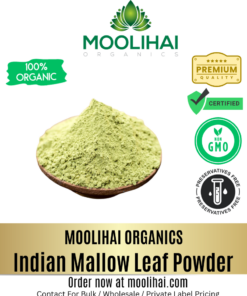

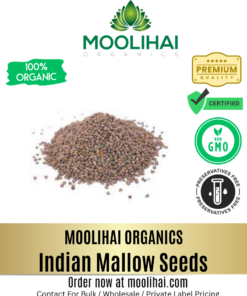

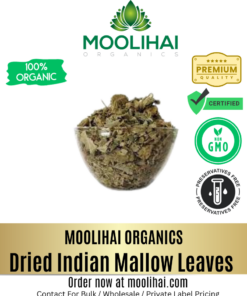





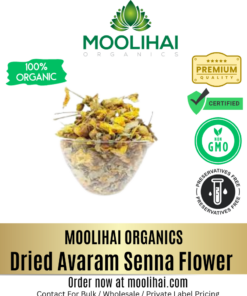



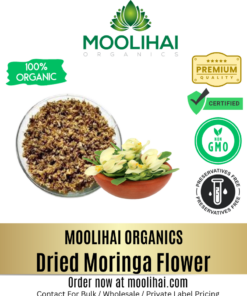



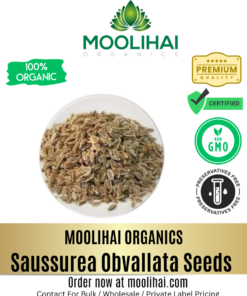




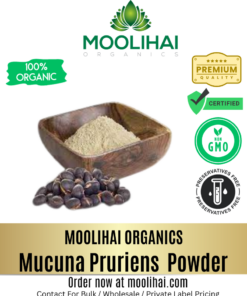





Please does it cure stroke with brain damage, if yes then which part to use and the dosage